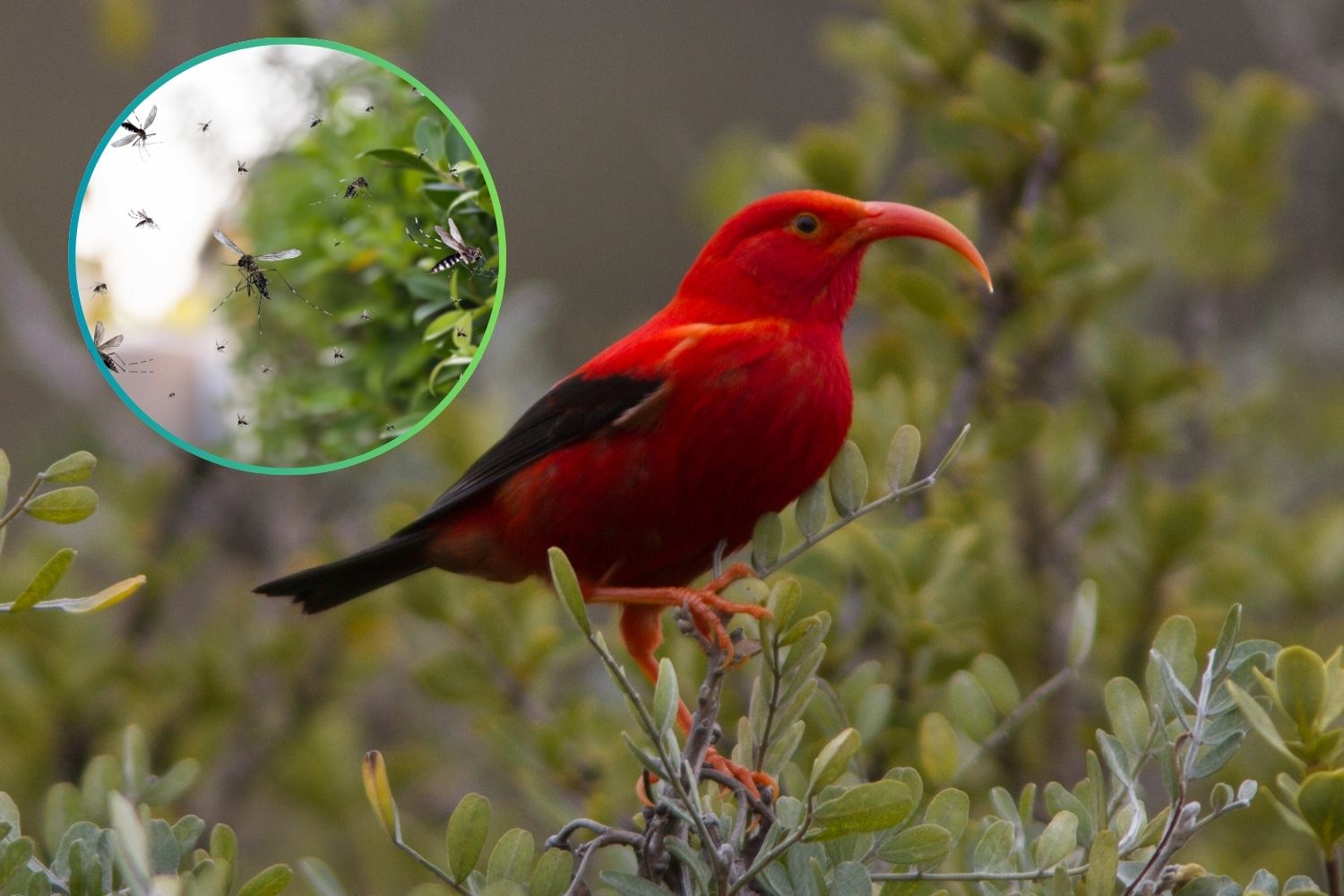Hawaiian honeycreepers are on the brink of extinction due to invasive mosquitoes spreading avian malaria. A new, innovative mosquito control project using drones offers hope for their survival.

Hawaii is home to a unique group of birds that exist nowhere else on Earth. These birds are small, colorful, and incredibly distinctive. They are known as honeycreepers, and at one point, there were more than fifty species. Today, only 17 remain, and almost all of them are in danger of extinction. Some, like the ‘akikiki, have already disappeared from the wild. Others, such as the ʻakekeʻe, are reduced to just a few dozen individuals.
The cause of this decline is not only deforestation or urban development. The greatest threat comes from a tiny enemy: the mosquito. Originally not native to the islands, mosquitoes arrived in the 1800s aboard whaling ships, bringing with them a new problem—the avian malaria parasite. The small birds had no defenses against this new threat, and one by one, they began to die off.
For years, the remaining individuals sought refuge in the cooler mountains of islands like Maui and Kauai, where mosquitoes couldn’t reach. However, with the rise in temperatures caused by climate change, these once-safe zones are now becoming hospitable to mosquitoes. They are steadily moving higher into the mountains, and now, the birds have nowhere left to flee.
The plan
The response is being led by the American Bird Conservancy, in partnership with a local network called Birds, Not Mosquitoes. After years of research, they have devised a specific strategy: the use of incompatible insect technique. In simple terms, male mosquitoes are bred in laboratories and infected with a natural bacterium (Wolbachia). When they mate with wild females, the eggs do not hatch, effectively preventing new mosquitoes from being born.
This approach is non-invasive, uses no pesticides, and does not harm other beneficial insects. However, it requires persistence. Every week, approximately one million mosquitoes are released between Maui and Kauai. These mosquitoes are placed in biodegradable capsules and dispersed via drones and helicopters, with the goal of reducing the mosquito population until they can no longer transmit malaria to the birds.
Fewer costs, fewer risks, more effectiveness
Releasing mosquitoes is not as simple as it may sound. The Hawaiian mountains are hard to access, the weather changes rapidly, and helicopters can’t always fly. Additionally, using helicopters is costly. Enter drones, designed to fly in challenging conditions, carrying light payloads, and making precise releases.
Experts say this is the first instance in the world where drones are being used for conservation purposes—specifically, to release mosquitoes with the mission of saving endangered species. It’s all done in a way that is more affordable, safer, and more sustainable.
The project is already underway, and if successful, it could serve as a model in other regions, as long as the mosquitoes are indeed invasive. In ecosystems where these insects are native, however, there is a risk of disrupting delicate natural balances.
According to a study by the San Diego Zoo Wildlife Alliance, there is still time to save the rarest honeycreepers. But action is needed now. If more years are allowed to pass, it will be too late. The populations are so small that even a natural mutation for malaria resistance, if it occurs, would not spread quickly enough to save them.
However, if the plan succeeds in controlling the mosquitoes, the birds may have the time they need to recover. In some parts of the island of Hawaii, for example, there are already signs of natural resistance to the disease in the ʻamakihi species.
At the same time, captive breeding centers are working to protect the most at-risk species, like the ‘akikiki, with the goal of reintroducing them into the wild when it becomes possible.
Chris Farmer, the Hawaiian program director for the American Bird Conservancy, doesn’t mince words:
“If we don’t save these birds now, we’ll never see them again. This is our last chance.”
